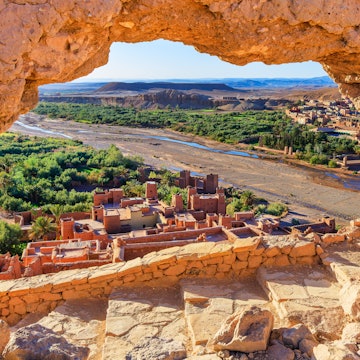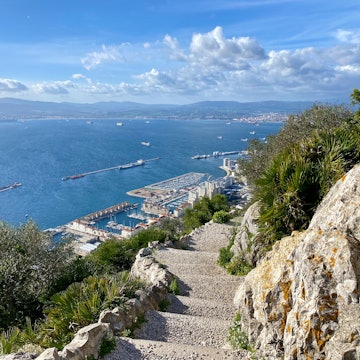

The Mediterranean Sea spreads its calm waters over 1660km of Spanish coast, from Tarifa, the southernmost European point in the province of Cádiz, to the rocky cliffs of Cabo de Creus, on the border between France and Spain in northern Catalunya. This vast distance allows for a wide variety of landscapes, towns and cultures that are a far cry from the general perception of the Mediterranean as a Costa del Sol-style tourist trap.
Anyone wishing to enjoy the real gems along this coast would do well to rent a car and embark on a very sweaty and sandy road trip, as long-distance train tickets in Spain can be fairly expensive and shorter connections are usually reliant on just one or two trains a day. And nothing beats the excitement of hitting the asphalt under the Spanish sun. Here is a suggested two-week itinerary of the highlights.
Mediterranean Andalucía
Málaga is a great starting point for a road trip; the airport offers plenty of international connections and has a range of car rental companies on site. Since Málaga city and other nearby hotspots of the infamous Costa del Sol (like Fuengirola, Torremolinos or Benalmádena) cater for a more traditional type of holiday, road-trippers should head east towards the relatively undiscovered Axarquía. Towns in this region, known as pueblos blancos (white villages) due to their immaculate facades, are widely spread out along the coast and in the nearby mountains. Nerja (55km east from Málaga) is a great first stop that bridges traditional tourism and more experimental travelling: day trips to nearby Frigiliana, a pueblo blanco with breathtaking views of the Sierra Almijara, and Salobreña, home to a 10th-century Arab castle overlooking the sea, can be easily accommodated in between lazy beach days.
Following the road further east will see travellers enter the province of Almería, often forgotten by the masses. There are plenty of characterful towns along the coast, such as Roquetas de Mar or Adra, both a stone’s throw away from the picturesque Cabo de Gata and the Desierto de Tabernas, the only recognised desert in western Europe and background of dozens of Hollywood classics such as Lawrence of Arabia, The Good, The Bad and The Ugly or Indiana Jones and the Last Crusade.
Murcia and Levante
The province of Murcia, prone to extreme temperatures due to its closeness to the Tabernas desert (100km), may be small in size but it still throws in a couple of remarkable stops on the way: the quaint village of Águilas, with its restored medieval Castle of San Juan and windmill museums, and notable Cartagena, one of the most historic Spanish ports due to its strong Phoenician, Roman and Moorish heritage, are absolute musts. The town of Mazarrón is a good choice for a base camp in the area, far from the excesses of nearby tourist strip La Manga.
Northwards from here lies the famous Levante español, more than 500 km of coastline, host to some of the most infamous Spanish resorts (Gandía, Benidorm, Torrevieja). Travellers willing to dig a little deeper can find great alternative destinations such as the spectacular Albufera de Valencia, a freshwater lagoon of more than 21,000 hectares, a magnet for birdwatchers and fishing aficionados. The city of Valencia, 11km northwards of L’Albufera, is another obligatory one-day stop: tradition and outright modernism go hand-in-hand in Spain’s fourth biggest city.
The nearby town of Sagunto, with strong links to Spanish mythical warrior El Cid and a stunning beach, will also hit the sweet spot between sightseeing and leisure. If in the area during the month of July, a quick visit must be paid to Benicassim, where the international FIB music festival takes place, transforming the city into a patchwork of global languages, music and food.
Mediterranean Catalunya (Costa Daurada and Costa Brava)
The Costa Daurada (Golden Coast) in the province of Tarragona begins north of the Levante region. The beaches here are usually packed, but the inland areas are criminally underrated, in particular the gorgeous national parks of Serra del Montsant and Poblet. Anyone with an interest in natural landscapes would also do well to check out the Ebro Delta, one of the largest wetland areas in Europe. While many coastal towns in Tarragona have fallen victim to the mass tourism, there are still some unspoilt villages such as Altafulla that can work as unconventional headquarters to explore the region.
Barcelona, one of the jewels of the Mediterranean, awaits less than 90km away from here, and even though one could easily lose a week just scratching the surface of what the Catalonian capital has to offer, no Med lover should miss a trip to the Costa Brava, beyond Barcelona and along the coast of the Girona province. The name of the area translates as ‘wild coast’ but this refers to the rugged landscapes of some of its Riviera, not the gentle waters that bathe the coastline. In fact, the region holds a record number of European Blue Flags for its pristine, placid beaches, mainly centered around the villages of Calella, Llafranc and particularly Tamariu, a truly undiscovered corner of the Costa Brava that has managed to retain its individuality against decades of urban development nearby.
The town of Figueres, birthplace of surrealist genius Salvador Dalí (whose house-museum can be visited) and the surrounding coastal towns of Port de la Selva and Cadaqués from which he drew much inspiration can provide an artistic swansong to this lengthy trip and are less than an hour away on the motorway.
This article was first published in August 2012 and was updated in October 2012.

Discover the untouched corners and hidden coves of Spain with the definitive guide, Lonely Planet's Spain guide book.















